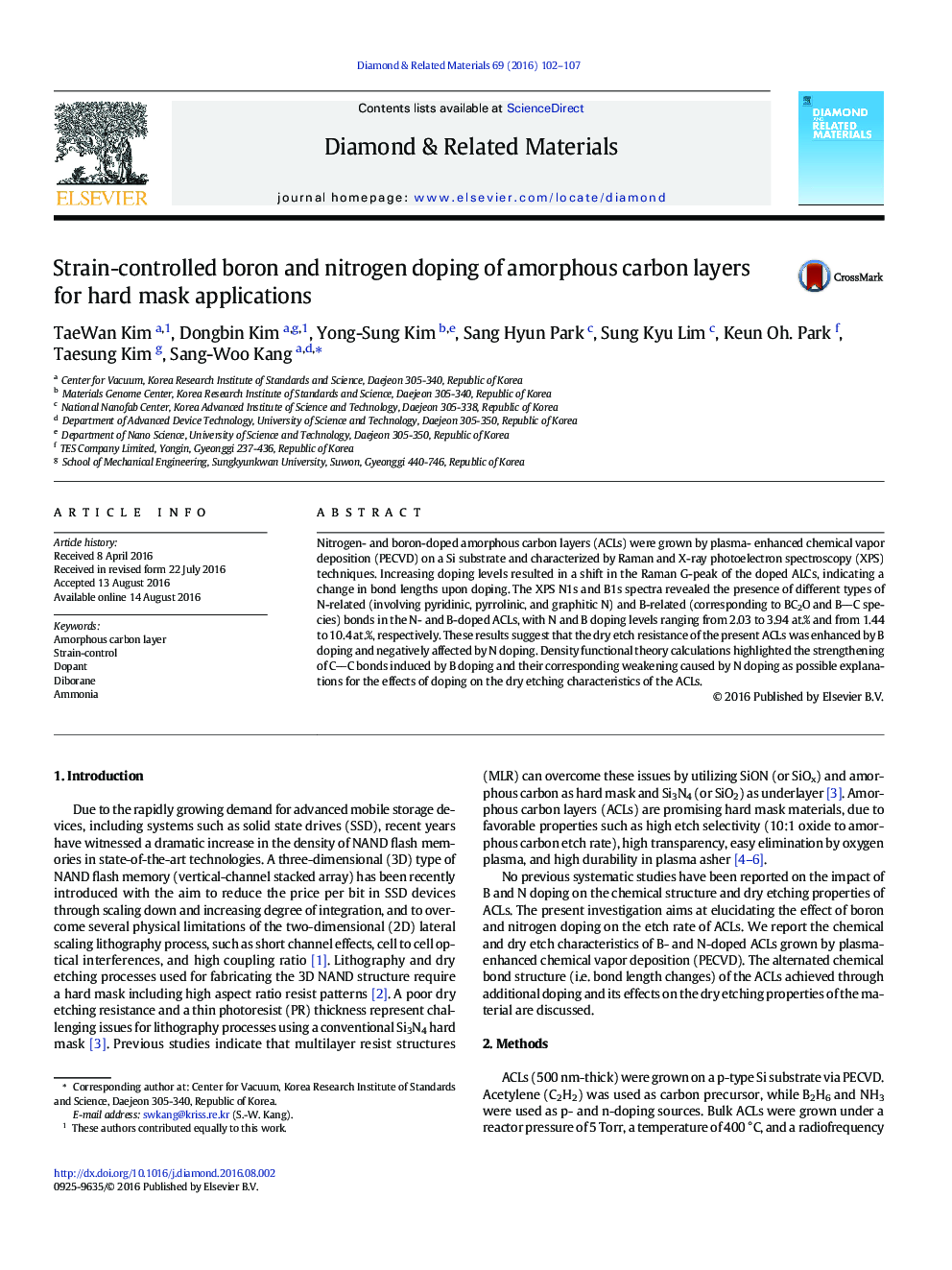| کد مقاله | کد نشریه | سال انتشار | مقاله انگلیسی | نسخه تمام متن |
|---|---|---|---|---|
| 701436 | 1460762 | 2016 | 6 صفحه PDF | دانلود رایگان |
Highlight
• N- and B-doped amorphous carbon layers were grown by PECVD.
• The dry etch resistance of the ACLs was enhanced by boron doping.
• The dry etch resistance of the ACLs was negatively affected by N doping.
• DFT calculation highlighted the stronger of CC bonds induced by B doping.
Nitrogen- and boron-doped amorphous carbon layers (ACLs) were grown by plasma- enhanced chemical vapor deposition (PECVD) on a Si substrate and characterized by Raman and X-ray photoelectron spectroscopy (XPS) techniques. Increasing doping levels resulted in a shift in the Raman G-peak of the doped ALCs, indicating a change in bond lengths upon doping. The XPS N1s and B1s spectra revealed the presence of different types of N-related (involving pyridinic, pyrrolinic, and graphitic N) and B-related (corresponding to BC2O and BC species) bonds in the N- and B-doped ACLs, with N and B doping levels ranging from 2.03 to 3.94 at.% and from 1.44 to 10.4 at.%, respectively. These results suggest that the dry etch resistance of the present ACLs was enhanced by B doping and negatively affected by N doping. Density functional theory calculations highlighted the strengthening of CC bonds induced by B doping and their corresponding weakening caused by N doping as possible explanations for the effects of doping on the dry etching characteristics of the ACLs.
Journal: Diamond and Related Materials - Volume 69, October 2016, Pages 102–107
